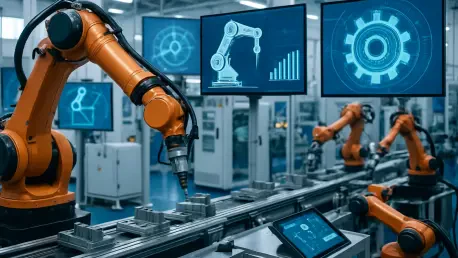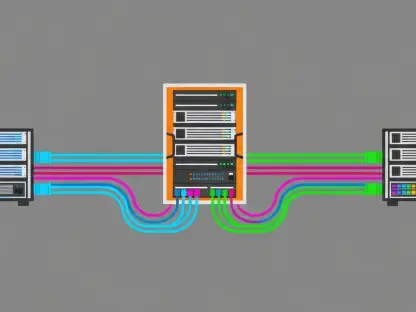I’m thrilled to sit down with Chloe Maraina, a Business Intelligence expert whose passion for data science and knack for crafting visual stories from big data have made her a visionary in the field of data management and integration. With her deep understanding of industrial data governance and IT/OT convergence, Chloe offers unique insights into how modern manufacturing is evolving under Industry 4.0. In this interview, we dive into the transformation of factory floors, the merging of IT and OT systems, the shift from isolated to connected machinery, and the complex challenges of governing data in this new landscape. We also explore the risks of neglecting these changes and the power of collaboration in overcoming them.
Can you share your perspective on what Industry 4.0 means and how it’s reshaping the manufacturing world today?
Industry 4.0, to me, represents a revolution in manufacturing driven by smart technology and data. It’s about integrating advanced automation, robotics, and big data analytics into the production process to create what’s often called the “smart factory.” This shift is transforming how factories operate by enabling real-time decision-making and predictive capabilities. For instance, instead of just reacting to machine breakdowns, companies can now predict failures before they happen and schedule maintenance during downtime. It’s a game-changer that’s driving efficiency, cutting costs, and opening up new ways to optimize production.
What specific technologies or trends under Industry 4.0 have you seen making the most significant impact?
I’ve seen a huge impact from technologies like IoT sensors and machine learning. IoT devices are everywhere on the factory floor now, collecting data on everything from machine performance to energy usage. When paired with machine learning algorithms, this data can uncover patterns that humans might miss—like subtle signs of wear in equipment. Cloud computing is another big trend, allowing massive amounts of data to be stored and analyzed off-site, which wasn’t feasible with older systems. These tools are creating a level of insight and automation that’s just incredible compared to even a decade ago.
How does the convergence of IT and OT play out in a practical, real-world manufacturing setting?
IT and OT convergence is about breaking down the old barriers between the office and the factory floor. In practice, it means that data from operational technology—like machines and sensors—is now flowing into IT systems for analysis and storage. Imagine a factory where a sensor on a production line detects a glitch and instantly sends that data to a cloud-based dashboard that IT teams monitor. From there, they can work with OT staff to fix the issue without stepping onto the floor. It’s a seamless interaction that didn’t exist when these two worlds were completely separate, and it’s becoming the norm in modern plants.
Why was keeping OT systems air-gapped so critical in the past, and what benefits did that isolation provide?
Air-gapping OT systems was all about protection and reliability. These systems ran critical operations, like assembly lines or power plants, where any interruption could be disastrous. By keeping them disconnected from external networks, you minimized the risk of cyberattacks or interference. It also ensured uptime since there was no chance of a software update or network glitch from the IT side disrupting operations. Back then, security through obscurity and physical isolation were often enough to keep things safe, and the focus was on keeping production running smoothly without outside distractions.
What’s changed to make air-gapped systems less practical in today’s manufacturing environment?
The biggest change is the demand for data. Modern manufacturing thrives on insights from big data analytics, which means machines need to be connected to share information in real time. Staying air-gapped cuts you off from the benefits of predictive maintenance, remote monitoring, and cloud-based analytics. Plus, customer expectations and competitive pressures push companies to integrate systems for faster, more agile responses. Isolation just isn’t compatible with the always-on, data-driven world of Industry 4.0, even if it means facing new risks.
With machinery now always connected, how has the flow of data evolved in manufacturing settings?
The shift to always-on systems has unleashed a flood of data that was previously locked away. We’re talking terabytes of operational info—machine performance metrics, sensor readings, even environmental conditions—streaming from the factory floor to enterprise systems like data lakes or cloud warehouses. This data now feeds directly into tools for advanced analytics, like AI models that optimize production schedules or predict equipment failures. It’s a complete reversal from the days when data stayed local to a single machine or control system, and it’s changing how decisions are made at every level.
What are some of the toughest data governance challenges you’ve encountered with IT and OT coming together?
Data governance gets incredibly tricky when IT and OT converge because these systems weren’t built to work together. One major hurdle is security blind spots—IT’s strict security protocols can clash with OT’s need for real-time performance, leaving gaps that bad actors can exploit. Another issue is fragmented monitoring; with different tools for IT and OT, you often lack a clear, unified view of what’s happening. Then there’s the communication breakdown between teams who historically speak different languages—IT might prioritize data integrity while OT focuses on uptime, and aligning those goals takes serious effort.
What are the potential consequences of not bridging the gap between IT and OT effectively?
Failing to bridge that gap can be catastrophic. If IT security policies aren’t tailored to OT needs, you risk delays in critical processes—imagine a production line shutting down because a security scan causes a latency spike. On the flip side, exposing OT systems to IT networks without proper safeguards can invite cyberattacks that cripple operations or cost millions in damages. It’s a lose-lose situation where you’re gambling with downtime, safety issues, or breaches. Without a unified approach, you’re just waiting for something to go wrong.
How can collaboration between IT and OT teams help address these challenges and unlock new opportunities?
Collaboration is the key to turning this convergence from a headache into an advantage. When IT and OT teams work together—say, through cross-functional groups or dedicated networking engineers—they can design systems that balance security with performance. For example, I’ve seen companies set up secure communication protocols and industrial firewalls that let data flow without exposing vulnerabilities. This teamwork also leads to innovations like unified dashboards that give everyone real-time visibility, cutting diagnostic times and even reducing costs by spotting inefficiencies. It transforms a cultural divide into a powerful partnership.
What’s your forecast for the future of IT/OT convergence and data governance in manufacturing?
I think we’re just at the beginning of this journey. Over the next decade, I expect IT/OT convergence to deepen as more devices get connected and AI becomes even more embedded in operations. Data governance will have to evolve rapidly to keep up—think automated compliance tools and real-time monitoring as standard practice. We’ll likely see more hybrid roles blending IT and OT expertise, breaking down silos for good. The challenge will be staying ahead of security threats in this hyper-connected world, but I’m optimistic that with the right focus on transparency and collaboration, manufacturing can become smarter, safer, and more efficient than ever.









